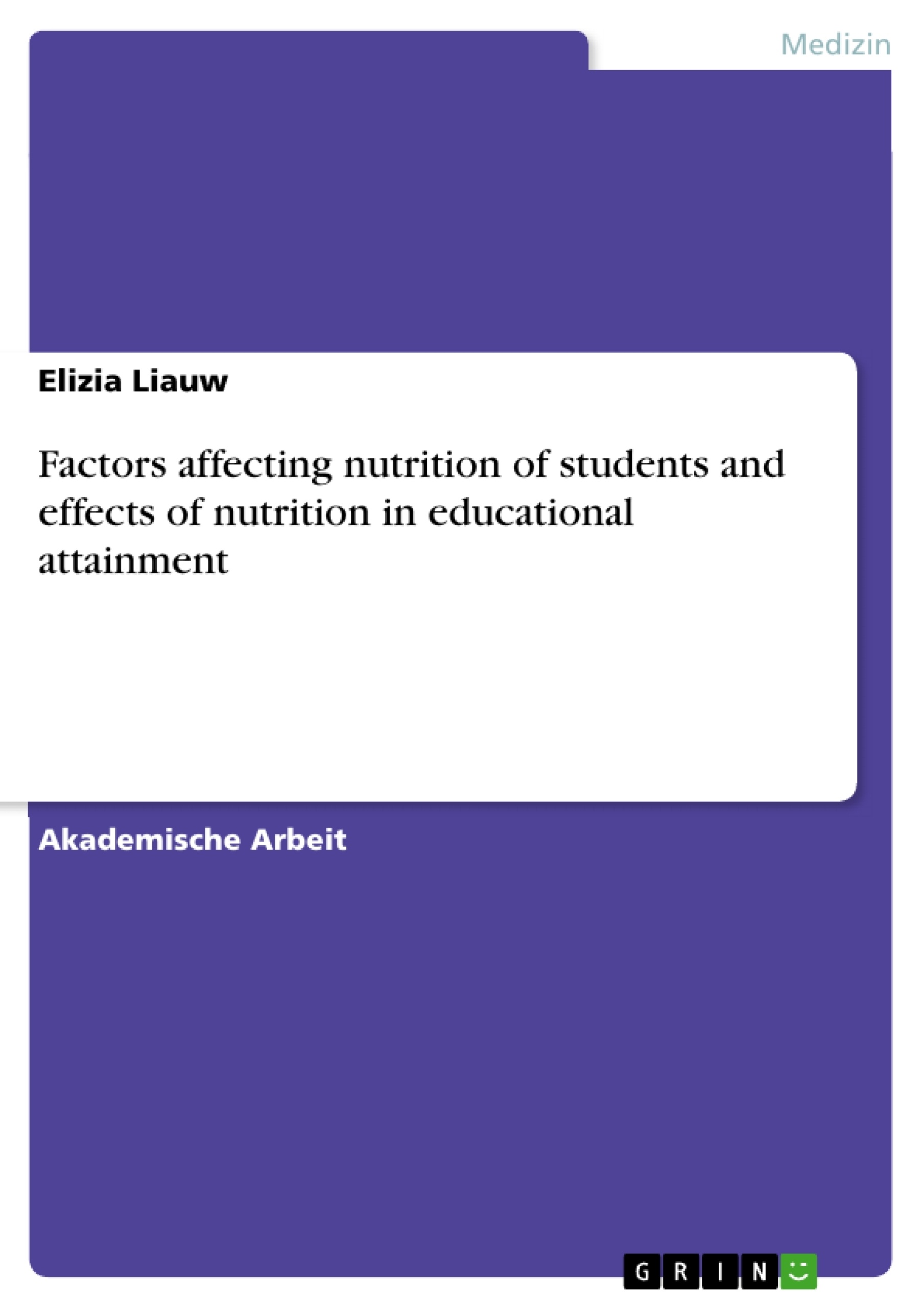This paper aims to determine the factors contributing to future generation’s educational attainment. It assesses the effectiveness of doing a school-feeding program in increasing school enrollment in the area of Cilincing. This paper attempts to answer the question of: What are the factors affecting nutrition of student in Sekolah Bambu, Cilincing and how is nutrition affecting educational attainment.
In the investigation of this question, both qualitative and quantitative data were collected from primary resources. The quantitative data is gained from measuring BMI of 100 random kids, both boys and girls, between the ages of 7 years old to 12 years old. Qualitative data is also obtained through in depth interviews with 10 random families. Both qualitative and quantitative data is gathered from the area around Sekolah Bambu, Cilincing.
This paper arrives at the conclusion that the biggest factor that holds children in Cilincing back from getting sufficient nutrition is essentially because of lack of women empowerment, which could eventually affects educational attainment. Lack of nutrition to an extent does play a role in educational attainment. However, it does not play a big role in determining the number of children that go to school (quantity). It plays a much bigger role in the quality of how students are performing in school, as consuming sufficient nutrients leads to better concentration and cognition. In order to resolve the lack of education for future generations in Cilincing, we must then go to the root of the problem, which is essentially women empowerment.
Inhaltsverzeichnis
- I. Introduction
- II. Geographical Context
- III. Locational Context
- IV. Theoretical Context
- V. Methodology
- VI. Analysis
- 1. Food Intake Analysis
- 2. Why Aren't They Getting Enough Food?
- 3. Why Do They Have Big Families?
- VII. Conclusion
Zielsetzung und Themenschwerpunkte
Dieser Essay untersucht die Faktoren, die die Ernährung von Schülern in Sekolah Bambu, Cilincing beeinflussen, und erforscht den Zusammenhang zwischen Ernährung und Bildungserfolg. Ziel ist es, die Effektivität eines Schulmahlzeitenprogramms zur Steigerung der Einschulung in Cilincing zu beurteilen.
- Einflussfaktoren auf die Ernährung von Schülern in Cilincing
- Der Zusammenhang zwischen Ernährung und Bildungserfolg
- Bewertung der Effektivität eines Schulmahlzeitenprogramms
- Die Rolle der Frauenempowerment in der Verbesserung der Ernährungslage
- Zusammenhang zwischen Armut, Ernährung und Bildung in Indonesien
Zusammenfassung der Kapitel
Das erste Kapitel stellt den Zusammenhang zwischen ausreichender Ernährung und Lebensqualität dar, mit besonderem Fokus auf Kinder. Kapitel zwei beleuchtet die ungleiche soziale und wirtschaftliche Entwicklung Indonesiens und die daraus resultierenden gesundheitlichen Herausforderungen, insbesondere in armen Haushalten. Kapitel drei zeigt die geografische Lage von Cilincing und die damit verbundenen sozialen und wirtschaftlichen Herausforderungen. Kapitel vier behandelt die theoretischen Rahmenbedingungen für die Untersuchung der Ernährung von Schülern und deren Einfluss auf den Bildungserfolg. Kapitel fünf beschreibt die Methodik, die für die Datenerhebung und -analyse verwendet wurde. Kapitel sechs präsentiert die Analyseergebnisse, die die Faktoren aufzeigen, die die Ernährung von Schülern in Cilincing beeinflussen, und die Auswirkungen der Ernährung auf den Bildungserfolg.
Schlüsselwörter
Die zentralen Begriffe des Essays sind Ernährung, Bildungserfolg, Frauenempowerment, Schulmahlzeitenprogramm, Armut, Ungleichheit, Indonesien, Cilincing, Sekolah Bambu, quantitative und qualitative Daten.
- Quote paper
- Elizia Liauw (Author), 2015, Factors affecting nutrition of students and effects of nutrition in educational attainment, Munich, GRIN Verlag, https://www.grin.com/document/306231



